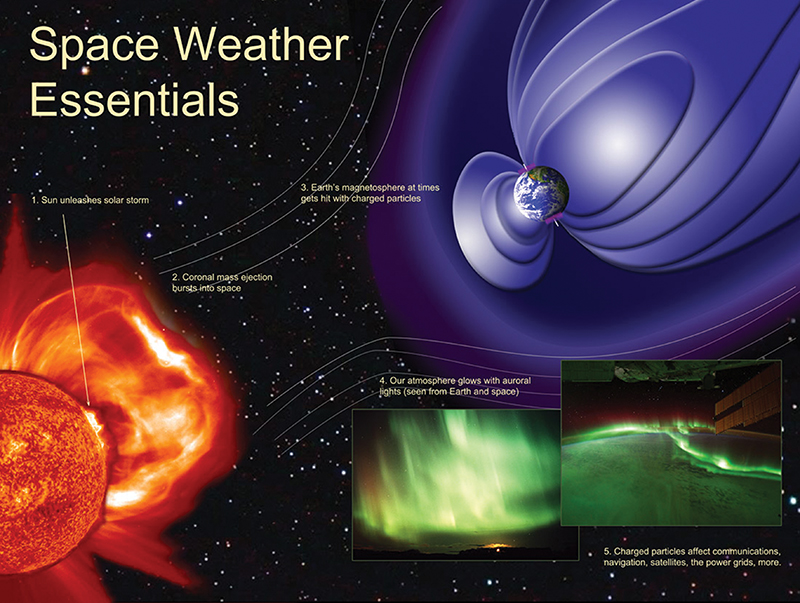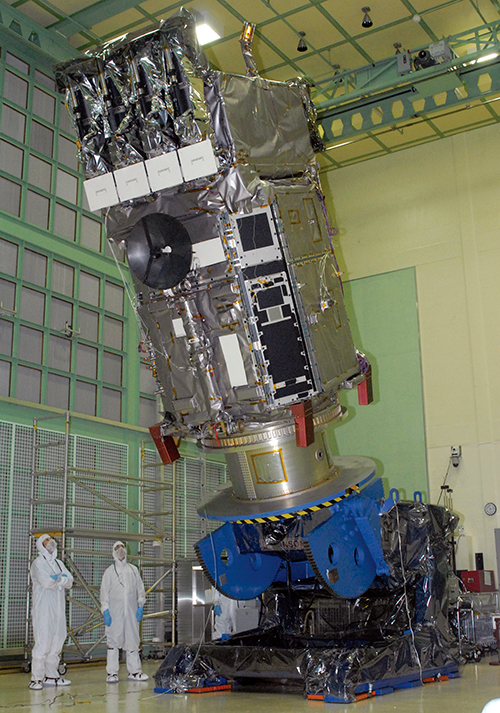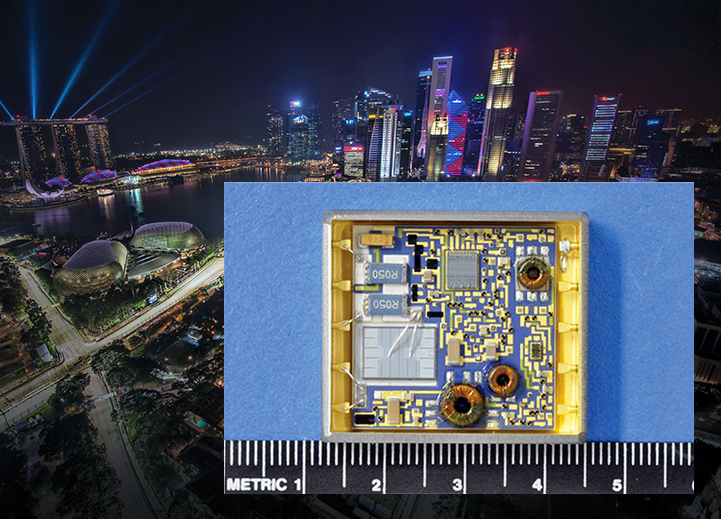
Electrical Monitoring Devices Save on Time and Cost
NASA Technology
The sun requires no introduction. Earth orbits it; life happens because of it; we schedule our lives around its rhythmic risings and settings. Yet, despite its central importance in just about everything that concerns our planet, there’s still a lot we don’t know about this enormous ball of energy.
To further our understanding of how the sun impacts Earth, in 2001 NASA initiated the Living with a Star program, and among its various missions is its crown jewel: the Solar Dynamics Observatory (SDO). Launched in 2010, the SDO, even by agency standards, is a technologically advanced satellite. Through a suite of onboard instruments the spacecraft provides real-time, high-definition images of the sun’s atmosphere and conducts measurements of both its magnetic field and its varying output of extreme ultraviolet (UV) radiation.
Much of the data gleaned from the SDO is being used to help scientists understand the nature and predictability of energetic particles, solar wind, and other potentially harmful radiation that finds its way toward Earth. In fact, Earth’s magnetic field does much to shield the planet from most solar radiation. But anything that exists outside of its envelope is vulnerable, especially the SDO.
“You’ve got this spacecraft whose job it is to analyze the sun,” says Dennis Krus, who was the satellite’s lead components engineer at Goddard Space Flight Center. “It’s going to get hit with all kinds of radioactive particles that can cause all sorts of electrical problems.”
One such problem is called a single-event upset (SEU), where a radioactive particle transfers energy by ionizing a satellite’s circuits, igniting a fleeting surge of electricity, not quite powerful enough to fry a component such as a camera, for instance, but strong enough to blow its corresponding fuse, rendering the camera useless just the same.
On a spacecraft, fuses can be friend or foe. At best, they prevent overheating or even fire by cutting off the flow of electricity to a device when the passing current exceeds an allowable number of amps; at worst, as is the case with an SEU, they can knock an otherwise operational instrument permanently out of commission.
To prepare for any number of scenarios, the SDO was developed as a redundant satellite, meaning every critical piece of hardware—cameras, antennas, and heaters—has a spare. But NASA also wanted an alternative to the electrical fuse, a technology that could protect the spacecraft and other future big-ticket satellites from dangerous excess currents without needing to deactivate perfectly functioning hardware in the event of an SEU. The agency found what it wanted in a solid-state power controller, also known as an SSPC.
Technology Transfer
Like electrical fuses, SSPCs control for current overloads by shutting off power to circuits when the number of amps goes above the allowable threshold. But unlike fuses, they don’t operate on a one-way street—they also have the ability to switch the power back on. The technology also allows for remote monitoring and diagnosis, and if the issue is resolved, electricity flow can be restored through the push of a button.
NASA had to find a company that was willing to work with the agency to develop an SSPC that could withstand the constant bombardment of radiation in space. It was going to be a lot of work. But Goddard’s Krus eventually found a partner in Garland, Texas-based Micropac Industries Inc.
In the early 2000s, Krus was already working with the 50-year-old electronics firm on developing hardware for the SDO when he broached the idea of reconfiguring its SSPC for use in space. After successfully tinkering with the engineering to fit the company’s model into a smaller surface mount package, as was also required for the mission, Micropac agreed to move forward.
“We were up to the challenge of helping the agency develop an entirely new electrical power distribution system,” says Micropac sales engineering manager Bill King.
Over the next few years the company worked hand-in-hand with NASA engineers to integrate various circuits, silicon components, and comparators in the power controller that were resistant to radiation. To test their hardiness, at nearby Texas A&M University, Krus would schedule for what he calls “beam time,” where high-energy radiation bombarded exposed sections of the SSPC. After every round, weaknesses were found and fixed.
“Eventually, we got the device to a point where it could withstand a dose of 100 kilorads of radiation,” he says, “It was now single-event upset immune, which means the heaviest particles coming from the sun would not cause a problem. Thus was born the world’s first high-reliability spaceflight solid-state power controller.”
Along the way, Micropac also worked with NASA to further refine the SSPC’s capabilities, including more adept handling of instant short circuits (sudden, intense spikes in electrical output), steady-state overloads (constant currents that are slightly higher than acceptable levels), and inrush currents (momentary jolts of electricity triggered by switching on a device).
With its improved function and newfound radiation-hardness, in the mid-2000s 96 of Micropac’s SSPC units were installed on printed circuit cards in the SDO, each device now monitoring a critical component, be it a camera, thruster, antenna, or computer system. Krus says, to his knowledge, because of its careful design the satellite has yet to experience an SEU, but the insurance provided by the SSPC lets him and his colleagues sleep a little easier at night.
“When you’re talking about saving critical hardware on a multi-million-dollar satellite,” he says, “it’s worth having onboard. It gives us peace of mind.”
Micropac’s SSPCs are now also being used on other NASA spacecraft, including the Lunar Reconnaissance Orbiter, Lunar Crater Observation and Sensing Satellite, and the Global Precipitation Measurement satellite. Meanwhile, the company has introduced the product into other markets.
Benefits
Soon after the NASA collaboration, Micropac’s space-bound device drew the attention of the military, which purchased a number of them for various ground-based applications. And since most electrical systems on Earth do not require radiation resistance, these SSPCs were considerably less expensive.
The device’s successful foray into the terrestrial market gave the company confidence to expand its offering, and in June 2013 safety certification firm Underwriters Laboratories approved the device for sale to the industrial sector. In turn, those companies are in the process of implementing the technology for use in a variety of settings.
For Micropac, SSPCs prove invaluable in virtually any setting where electricity plays a necessary role in operations. Consider gas stations or convenience stores, which now often use LED lighting for signage. Because those bulbs are more prone to overheating, they’re often closely monitored with circuit breakers, like the ones installed in homes. But a glitch caused by something as common as a sprinkler short circuit creates a hassle.
“The workers inspect it first, then they have to call somebody else to drive a truck out there,” says sales engineering manager Bill King. “Then those people may have to use one of those cherry pickers to reach the top of the roof where the light is and flip the switch.”
What about when the operating lights go out in a hospital? “Imagine if you had to climb through a roof panel to reset the circuit breaker,” King says. “Now you’ve contaminated the operating room.”
What about the traffic lights across the country that need constant checks for blown fuses, the conveyor belts at factories that require around-the-clock overcurrent monitoring, or the circuit breakers atthat need resetting in the basement? With SSPCs, King says, you can perform remote switching, protection, and resetting with the press of a button, and all through a smart phone application, if a company chooses to go that route.
“We’re kind of overwhelmed,” King continues. “When somebody asks, ‘What’s your market for this?’ Well, any place you’re switching power is our market. Where aren’t you switching power?”
And the device’s genesis was in sending NASA’s satellites into orbit with that extra assurance King says these devices are becoming known for. “We had a great working relationship with Krus and the rest of the NASA folks,” he says, “and we’re excited about how this technology is set to take off.”

The Solar Dynamics Observatory (SDO) is being lowered to a horizontal position for testing at Goddard Space Flight Center. Launched in February 2010, the satellite was developed as part of the Living with a Star program and is focused on analyzing energetic particles, solar wind, and other potentially harmful radiation that affect Earth.

The cavity of one of Micropac’s solid-state power controllers (SSPC) (inset), 96 of which are currently being used on the SDO to monitor instruments for power overloads. The technology replaces traditional fuses, which, once they’re blown during a power surge, cut off power to space-based instruments permanently. Back on Earth, SSPCs are applicable for any system that uses electricity, from commercial buildings and sports complexes to industrial plants and hospitals. The device makes it possible to control the power supply to electrical devices remotely, saving time and money in the process. Image courtesy of Wikipedia user Chensiyuan, CC-BY-SA 3.0

The illustration depicts how coronal mass ejections (CME) from the sun affect Earth. The SDO is charged with examining how the sun’s magnetic field is generated, structured, and converted into solar events such as CMEs.













